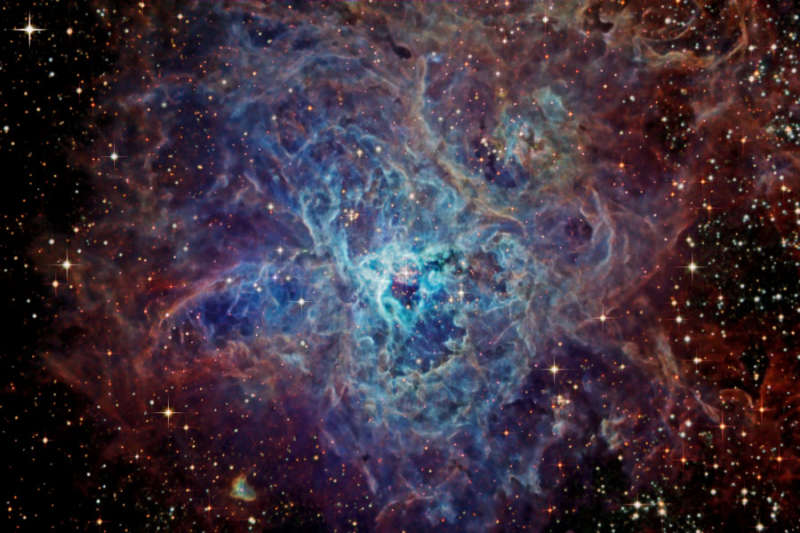
|
Credit & Copyright: Joseph Brimacombe
Explanation:
First
cataloged as a star, 30 Doradus is actually an
immense star forming region in nearby galaxy
The Large Magellanic Cloud.
The region's spidery appearance is responsible for its popular name,
the Tarantula
nebula, except that this tarantula is about 1,000
light-years across, and 180,000 light-years
away in the southern constellation
Dorado.
If the Tarantula
nebula were at the distance of the
Orion Nebula
(1,500 light-years), the nearest stellar nursery to Earth, it
would appear to cover about 30 degrees (60
full moons)
on the sky.
The spindly arms of the
Tarantula nebula
surround
NGC 2070,
a star cluster that contains some of the brightest,
most massive stars known.
Intriguing details of the nebula are visible in
this
scientifically-colored image.
The cosmic Tarantula
also lies near the site of the closest
recent supernova.
|
January February March April May June July August September October November December |
| ||||||||||||||||||||||||||||||||||||||||||||||||
NASA Web Site Statements, Warnings, and Disclaimers
NASA Official: Jay Norris. Specific rights apply.
A service of: LHEA at NASA / GSFC
& Michigan Tech. U.
Based on Astronomy Picture
Of the Day
Publications with keywords: star cluster - star formation - 30 Doradus
Publications with words: star cluster - star formation - 30 Doradus
See also:
- APOD: 2025 July 10 Á Lynds Dark Nebula 1251
- APOD: 2025 July 4 Á NGC 6946 and NGC 6939
- APOD: 2025 June 23 Á W5: Pillars of Star Formation
- Young Star Cluster NGC 346
- APOD: 2025 April 28 Á Gum 37 and the Southern Tadpoles
- APOD: 2025 March 26 Á Star Formation in the Pacman Nebula
- APOD: 2024 October 22 Á M16: Pillars of Star Creation
